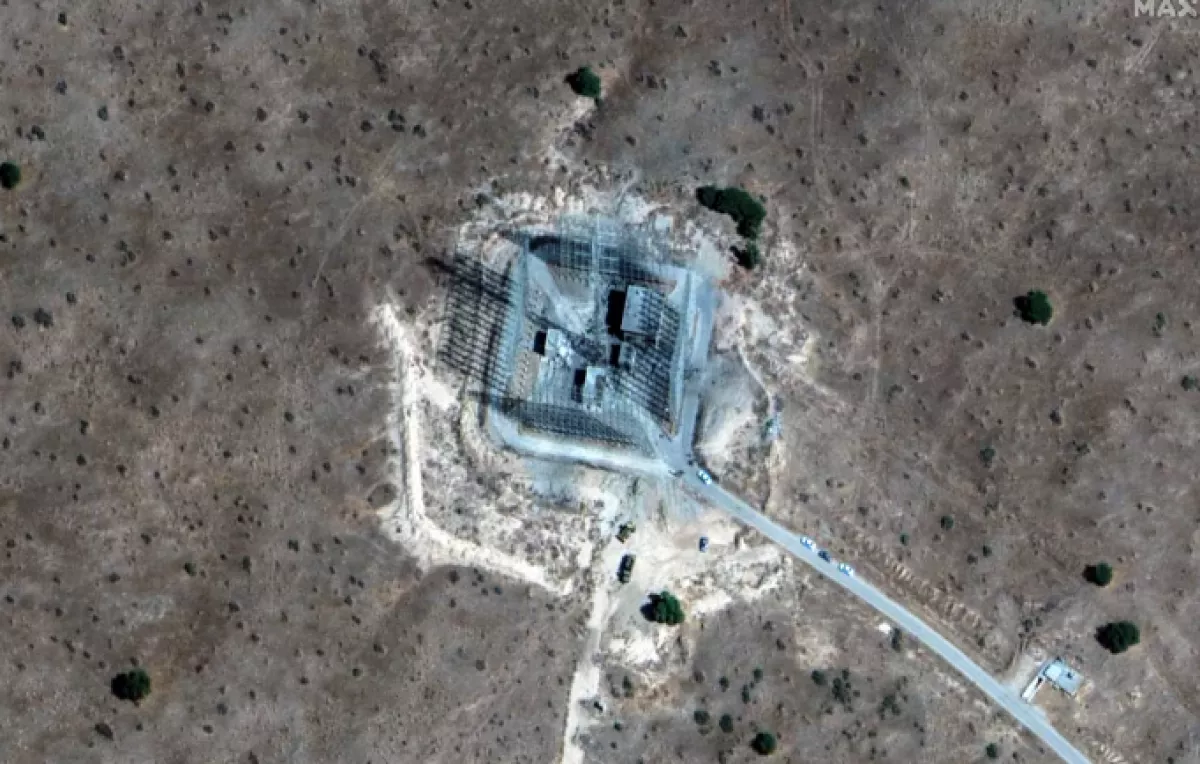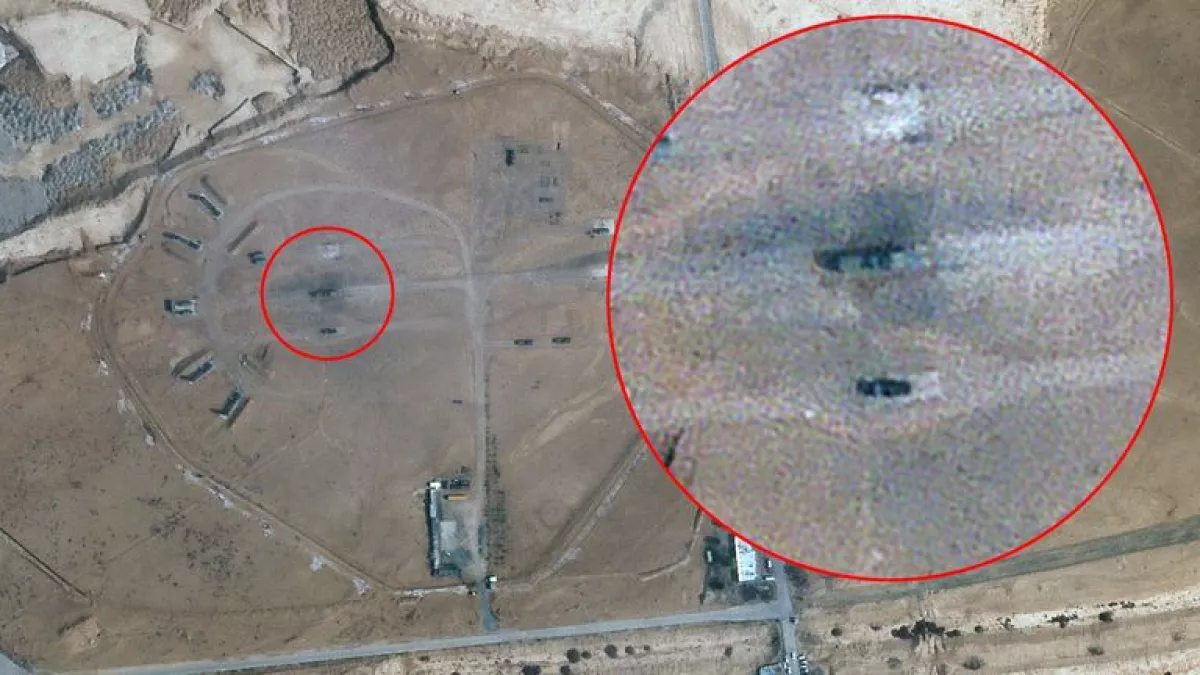WSJ: Israel dismantled key aspects of Iran's missile program and air defence Satellite images reveal
A recent report by The Washington Post highlights claims by U.S. and Israeli officials stating that Israel’s recent airstrike against Iran has significantly compromised Tehran’s strategic air defences and severely damaged its missile production facilities, leaving Iran more vulnerable to potential future attacks.
On October 26, Israel targeted crucial facilities for producing solid-fueled missiles at the Parchin military site near Tehran and the Shahroud ballistic missile and space centre, both linked to Iran’s elite Islamic Revolutionary Guard Corps. The strikes also incapacitated Russian-made S-300 missile defence systems. Despite the damage, Iran still possesses hundreds of missiles capable of reaching Israel, but the destruction of its air defences could facilitate Israeli retaliatory strikes against critical targets, including leadership, energy infrastructure, and possibly nuclear sites.
Norman Roule, a former Middle East specialist at the CIA, noted that the discussion within Iran is likely shifting from offensive capabilities to how the country will defend itself against potential Israeli retaliation, a challenging topic that may lead to intense debates among Iran's senior leadership.
Israel struck approximately 20 targets, adhering to the red lines established by Washington before the attacks. While Iran initially downplayed the airstrikes, some senior officials are now indicating a desire for aggressive retaliation. General Hossein Salami, head of the Revolutionary Guard, stated last week, “We will give an unimaginable response to the enemy.”

The Israeli operation unfolded in three phases, starting with attacks on Iran’s strategic air defences. Strikes came within about 7 yards of S-300 systems, rendering them inoperable, with regional security officials estimating that repairs could take several months with Russian assistance. Subsequent waves targeted ballistic missile production facilities and then radars, headquarters, antennas, and missile launchers, demonstrating Israel's ability to strike throughout Iran.
U.S. officials indicated that Iran’s ability to produce solid-fueled missiles could be delayed by a year or more as a result of the strikes. Israel specifically targeted planetary mixers used for blending components of solid rocket fuel, crucial for its most advanced missiles, and these mixers are not easily replaced. While Iran primarily uses liquid-fueled missiles, the attack dealt a significant blow to some of its key weapons programs.
The strikes destroyed around a dozen mixing facilities across three sites, significantly impacting facilities at Parchin, Khojir, and the Shahroud space centre. The Shahroud site, traditionally used for solid propellant-fueled space launchers, has also been linked to ballistic missile development. Notably, one solid propellant facility was reportedly not targeted, possibly because it was dedicated to shorter-range missile motors.

Experts suggest that Israel’s strikes not only targeted missile facilities but also reduced the risks associated with future operations against Iran’s nuclear sites by showcasing Iran's vulnerability. Retired General Frank McKenzie, former commander of U.S. Central Command, stated that Iran is currently more vulnerable to an Israeli attack than it has been in years.
The Revolutionary Guard, having suffered losses from previous Israeli airstrikes in Syria and Lebanon, is keen to retaliate, although some Iranian officials may advocate for a more cautious approach. Analysts emphasize that the precision of Israel's attacks has highlighted the vulnerability of Iran's military and civilian infrastructure.
Ariel Levite, a senior fellow at the Carnegie Endowment for International Peace, pointed out that Israel not only aimed to dismantle defences around Iran’s nuclear and oil installations but also sent a clear message about its capability to strike sensitive missile and nuclear facilities with precision.
While Israel avoided targeting nuclear sites in the recent strikes, it did hit a building at Parchin associated with suspected nuclear weapons research, according to satellite imagery. The destruction of S-300 air defence systems could facilitate future Israeli operations against Iran’s nuclear facilities, according to Michael Horowitz, head of intelligence for the consulting firm Le Beck.
These phased attacks, though complex, have made subsequent operations easier for Israel, allowing it to position aerial refuelling tankers closer to Iran, thereby increasing the payload capacity of its warplanes.
Western officials view Iran’s space program as a potential pathway to developing intercontinental missiles, as it provides experience in building powerful booster rockets suitable for long-range missiles. Solid-fueled missiles, which are more reliable and easier to store, are seen as practical for swift large-scale attacks, similar to the one Iran launched against Israel on October 1.
In 2022, the Revolutionary Guard revealed the Kheibar Shekan missile, followed by the inauguration of the Fattah-1 last year, both boasting a range of about 1,400 kilometres (approximately 870 miles), thereby putting Israel within their reach. Israel also targeted two long-range Iranian radars near the Iraqi border and conducted limited strikes around the Abadan refinery, possibly as a warning regarding future attacks on oil facilities.
By Tamilla Hasanova








